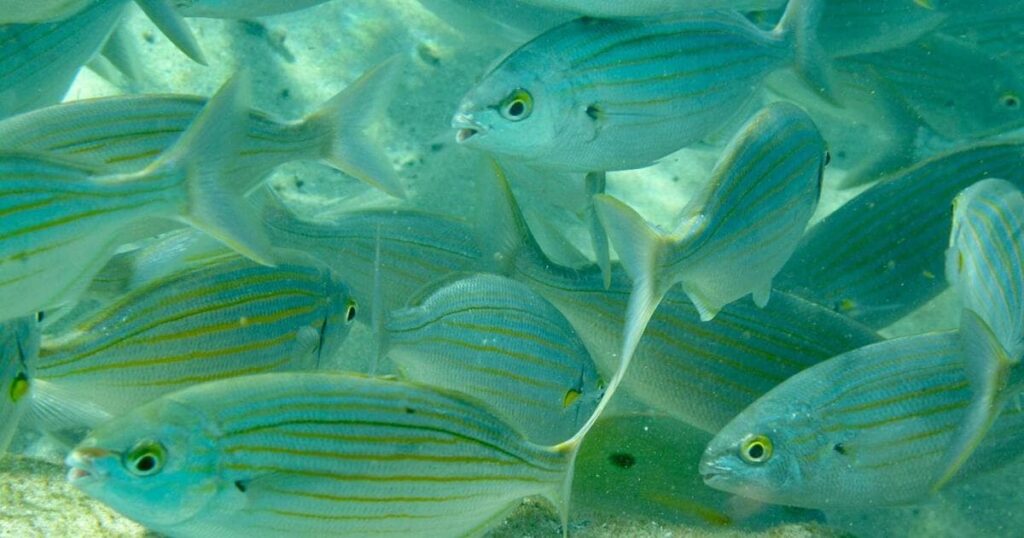Imagine possessing extraordinary abilities like diving for 13 minutes underwater without oxygen, having eyesight four times sharper than average, running incredible distances tirelessly, living nearly 120 years, or even being immune to cancer… These incredible “superpowers” of various human tribes are sure to inspire awe and perhaps a touch of envy!
While precise explanations are still being sought, scientists believe these unique abilities are largely influenced by diet, environment, and lifestyle.
The Tribes and Their Extraordinary Abilities
1. Kalenjin: The World’s Best Long-Distance Runners

The Kalenjin tribe, located in western Kenya, is the homeland of many of the world’s most outstanding marathon runners. Kalenjin people are known for a diet very low in carbohydrates but boast abundant energy reserves. While a precise explanation is still elusive, scientists suggest their unique abilities are largely due to their diet, environment, and lifestyle.
2. Bajau: The World’s Ultimate Free Divers

The Bajau tribe, from Indonesia, are famously known as the “sea nomads.” Bajau fishermen can hold their breath for up to 13 minutes and dive to depths of 70 meters (230 feet). This extraordinary ability is attributed to the fact that Bajau people typically have larger spleens than others, with some individuals possessing spleens up to 50% larger than average. Scientists from Cambridge University explain that a larger spleen helps these individuals consume less oxygen underwater, allowing them to dive deeper and longer than regular people.
3. Moken: The Tribe with X-Ray Vision Underwater

The Moken are another sea-faring tribe, living in western Thailand. This tribe, with their healthy tanned skin, possesses incredibly sharp underwater vision. Specifically, Moken children can clearly see objects several meters away in an aquatic environment.
Anna Gislen, a scientist from Lund University (Sweden), lived and researched among them. According to Gislen, Moken children have astonishing eyesight, with underwater vision up to 2 times better than European children. Young Moken can spot clams, oysters, and sea urchins at depths of 3-4 meters (10-13 feet) and identify objects as small as 1.5 mm. Interestingly, adults of the tribe do not retain this ability, and despite extensive research, scientists have not yet found a precise explanation.
4. Sherpa: The Mountain Superhumans

Having lived in the Himalayas for over 6,000 years, the Sherpa people have an extraordinary ability to adapt to extremely cold environments with low oxygen concentrations. While mountaineering is difficult for most people on any peak, for the Sherpa, it’s a relatively easy task. Due to their experience and special abilities, many mountaineering expeditions aiming to conquer Mount Everest always seek out professional Sherpa guides.
5. Fore: The Tribe Immune to a Terrifying Disease

Scientists discovered that the Fore tribe in Papua New Guinea possesses resistance to certain neurological diseases due to a historical practice of consuming human brains. The Fore traditionally practiced cannibalism, with men eating skin, and women and children consuming brains. This practice led to the spread of kuru, a prion disease similar to mad cow disease, causing affected individuals to become disoriented and aggressive. The epidemic caused a 2% decline in the tribe’s population. However, scientists also found that this consumption of human brains inadvertently provided them with strong resistance to diseases related to the nervous system.
6. Tsimane: The Tribe with the Healthiest Hearts

Research data from 2004 to 2015 revealed that approximately 90% of the Tsimane tribe in Bolivia show no signs of cardiovascular disease, an astonishing result. The Tsimane people live in tropical rainforests, primarily relying on farming, gathering, and hunting. Their diet is typically low in fat and protein, rich in vegetables and fruits, combined with continuous physical labor for many hours. Scientists believe their environment and lifestyle are the key factors in their low incidence of heart disease.
7. Hmong: The People Who Communicate Through Whistling

The Hmong people in China live in scattered communities at the foot of the Himalayas, often far apart, leading them to develop communication through whistling. Lovers would convey their thoughts and feelings through whistle tunes. While whistling cannot convey words as clearly as human speech, it can still convey complex messages. This unique form of “whistled courtship” is particularly suitable for lovers wishing to express themselves discreetly. Some other tribes in the Amazon also use whistling to communicate while hunting in the forest, believing it to be a safer method that doesn’t startle prey.
8. Australian Aborigines with Incredible Eyesight

Scientists report that some Australian Aborigines possess eyesight up to four times better than average people. Exceptional cases have been recruited into the Australian military for their ability to observe enemies from very long distances. They are also tasked with spotting illegal immigrant boats in Australia’s waters. However, due to factors such as poor hygiene and diabetes, Aborigines over 40 are six times more likely to suffer from blindness compared to others.
9. Okinawa: The World’s Longest-Lived People

The people of Okinawa, Japan, are considered some of the longest-lived in the world, with many individuals living past the age of 100. In 2013, a man named Jiroemon Kimura from the Kyotango region passed away at 116, becoming the longest-lived person recorded at that time. Scientists believe the secret to the longevity of the region’s inhabitants lies in a healthy diet, particularly rich in fish and fresh vegetables. This diet has since become widely popularized in Japan.
10. Laron Dwarfism Community: Immune to Cancer and Diabetes

In a remote region of Ecuador, some individuals suffer from Laron syndrome, a condition that prevents them from growing taller than 1 meter (3.3 feet). But this very mutation has seemingly allowed them to live longer and healthier lives. Dr. Jaime Guevara-Aguirre, after collecting data and conducting tests, was even more surprised to discover that they are completely immune to two of humanity’s most challenging diseases: cancer and diabetes.

